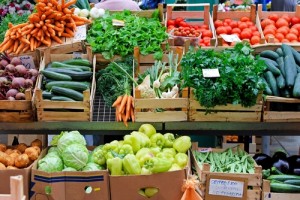
Innovation in packaging is nothing new, but are you prepared to start eating the packaging in which your food is comes to you? The whole idea has me a little bit conflicted, but as companies increasingly work to gain customers' attention in a variety of industries, this shift in packaging may have the potential to change food packaging as we know it.
Wired reported that WikiFoods, a laboratory located in Paris, started gathering attention about two years ago thanks to WikiCells. This development was said to be the first edible packaging technology that was intended to make plastic packaging obsolete, adding a new element of environmental responsibility to the packing process that would ensure 100 percent recycling. 100% recycling. Those are bold numbers in an time in which more and more companies are trying to focus their practices around just that effort.

The news source found that the packaging technology is now found in the larger market, including at Whole Foods. New Hampshire dairy company Stonyfield has now introduced Frozen Yogurt Pearls, a new type of product, that is the first to use WikiFoods' technology. A single scoop of frozen yogurt is wrapped in the packaging, which acts like a thin membrane around soft foods like yogurt. Much like the fruits and vegetables it's made from, the packaging can be washed and then eaten.
WikiFoods believes that in the future, its products can be sold in bulk bins and customers will shop with reusable bags to contain them.
Edible packaging only growing
The Guardian saw more companies putting similar concepts into action.
- Loliware, a startup in the United States, recently released a cup that will be both biodegradable and edible. The company experimented with several builds that could be turned into the product they wanted, and settled on a seaweed-based gel. After the drink within is consumed, shoppers can then take a bite into the cup itself - the current flavor is based on pink grapefruit and yuzu
- As long as a decade ago, Australian company, Plantic made a bioplastic from corn starch and plant-based dyes, though reviews were less than kind as to its flavor.
- Another company in the U.K., Pepceuitcals, won a research contract to develop a coating for fresh meat that was edible to both cut down on waste and improve shelf life.
- A prominent candy maker has also been known to wrap caramels in edible cellophane.
It's likely that this drive only continues to expand in the near future, as it has plenty of potential for many companies. So what is your verdict on this edible packaging? Do you think manufacturers should continue to pursue this newfangled packaging option?








